Photo": Ismael Rosas/Eyepix Group/LightRocket via Getty Images
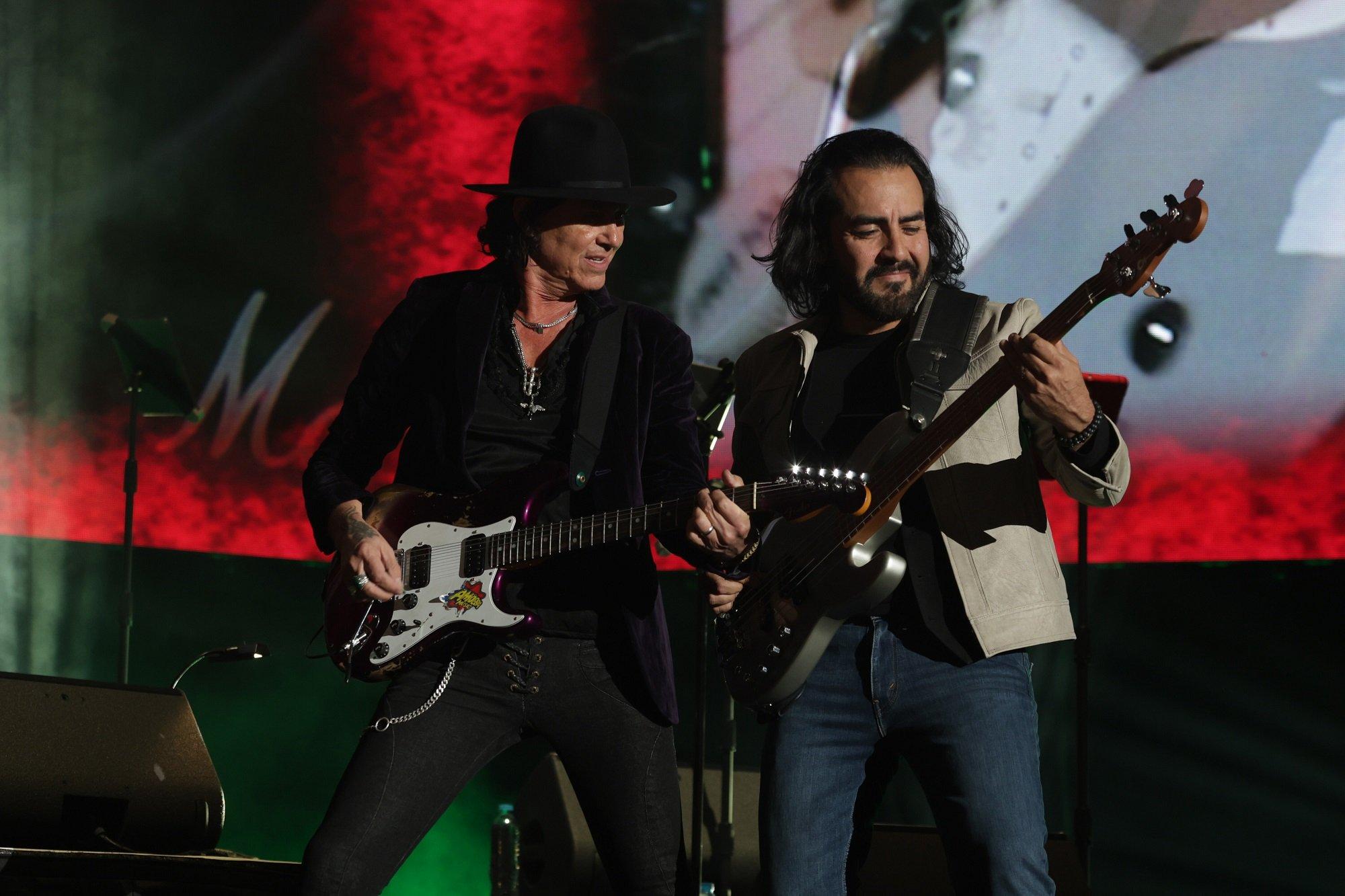
feature
Revisiting 'El Nervio Del Volcán' At 30: How Caifanes' Final Album Became A Classic In Latin American Rock
Released in June 1994, 'El Nervio Del Volcán' was a high point of the rock en español explosion and a serious evolution in the Mexican band's sound. Decades after its release, GRAMMY.com explores the story behind and impact of Caifanes' legendary LP.
As its title suggests, the final album from iconic Mexican rock band Caifanes heralded an explosive new evolution in hybrid rock. El Nervio Del Volcán ("nerve of the volcano" in English), was the culmination of a years-long quest by the band to alchemize modern rock and Latin American music.
Released June 29, 1994, El Nervio Del Volcán represents a high point of Mexico’s rock en español explosion. The 11-track album — the band's fourth release — saw Califanes continuing to explore the sounds of Mexico and Latin America, while broadening their sonic palette with jazz and country.
Since their formation in 1987, Caifanes had been working to refine a sound that was both commercially successful, highly original, and beloved by critics and fans alike. For their efforts, El Nervio became the second Spanish-language rock album to chart on the Billboard Latin 50. Rolling Stone, which rarely gave Spanish-language music column inches, gave the album a glowing review. Caifanes became the first Mexican band to play on MTV’s "Unplugged" in October 1994. The next year, they opened for the Rolling Stones in Mexico City.
While Caifanes might have been the leading band of Mexico’s rock en español movement, they were part of a cohort that included bands like Café Tacuba, Maldita Vecindad, and Fobia — which were experimenting with new fusions of traditional Latin American and rock sounds. Caifanes was at the vanguard of the Mexico City-centric movement, and El Nervio showcased the band's skill in developing "strong hits, and experimental things, which I think kind of worked," music journalist Ed Morales tells GRAMMY.com.
In an interview, Mexican rock historian Federico Rubli calls the record "a very important album, that maybe in its time wasn’t sufficiently appreciated. Even today, 30 years later, it’s difficult to recognize how great a work it was." If the crossover success weren't appreciation enough, El Nervio is notable for the way in which it set a high standard in songwriting and production for other bands that followed.
Caifanes was daring beyond their sonic experimentation. Like most Mexican rock bands at the time, their music was prohibited from being played on the radio and they risked arrest for performing. By the time of their first concert at the legendary Rockotitlan festival in Mexico City in 1987, though, there was no stopping what would soon become a new rock movement. The following year, they broke through the government’s music blockade when their first single, "Mátenme Porque Me Muero" ("Kill me because I am dying"), hit the airwaves.
The follow-up single, "La Negra Tomasa," a post-punk inflected cumbia rocker that became a smash hit across the country, selling a record 500,000 copies. Their self-titled debut album was released shortly thereafter, with the band members looking like extras from a movie about goth subculture on the cover. Their third album, 1992’s El Silencio, found the band more musically confident than ever before. Producer Adrian Below — the former guitarist and frontman of King Crimson who had also played with David Bowie and Talking Heads — helped the band expand their musical palette with "cotton-candy high notes, rumbling ocean rhythms with upsurges that bellows like sea elephants," music critic Chuck Eddy wrote.
Everything changed for the rock en español movement in 1993, when the pop-rock outfit Maná, which played a syrupy mix of tropical-influenced music, sold a million copies of its second album, ¿Dónde Jugarán Los Niños? Record labels were suddenly pursuing the next hit-making Latin band and BMG, which had signed most of the major rock en español bands, considered Caifanes its star rockers.
The band had fractured as they prepared to go back to the studio, with original bassist Sabo Romo and keyboardist Diego Herrera leaving the group. With the increased backing by their label, the trio of lead singer/songwriter and guitarist Saúl Hernández, Argentine-born guitarist Alejandro Marcovich, and drummer Alfonso André traveled to Burbank, California, to record El Nervio Del Volcán GRAMMY-winning producer Greg Ladanyi (known for his work with Toto, Fleetwood Mac, and The Church) was brought into the O’Henry Sound Studios, along with a few special guests. Famed trumpeter Jerry Hey (known for his work on Michael Jackson’s "Thriller") and Graham Nash both appear on El Nervio.
The songs that Hernández largely wrote and that the other band members would coalesce around were heavily influenced by Mexican folkloric sounds, though Marcovich in particular introduced a variety of Latin American sounds with his guitar. Throughout El Nervio, Caifanes flows effortlessly between genres: a bit of rustic son huasteco ("La llorona"), jolts of metal ("El Animal"), and Caribbean rhythms ("Aviéntame").
Rubli tells GRAMMY.com that the album was notably different from the band’s previous releases, largely due to Marcovich being given leeway with the guitar arrangements. "El Nervio Del Volcán is a much more rounded album, more integrated, with a sequence in each song that is, you might say, more logical," he says in Spanish. "And a lot of that is due to the liberty that Alejandro had to arrange them as he wanted."
Soul-stirring anthem "Afuera" was an unusual choice for a lead single — it features an instrumental guitar interlude that lasts for more than a minute — but proved brilliant. Even Markovich, the guitarist who wrote the interlude, was dubious about its commercial potential.
"I never could have imagined it would be a single," he said in 2022 on the podcast "Cuéntame Un Disco." "I even told the record company that they might want to do a more radio friendly version without it, but they left it and it worked."
Today the song is popular among musicians on YouTube precisely because of its interlude.
Second single "Aqui No Es Asi" was also a hit. Marcovich, again on the podcast, said he was writing melodies on the guitar when he found an unusual rhythm "between Caribbean and Andean." "It was a strange mix," he said.
Hernández has been called the "poet laureate of Mexican rock," and has often weaved social themes and indigenous mysticism into the lyrics of his songs. In the propulsive "Aqui no es asi," Hernandez obliquely refers to two different places — one materialistic and out of touch with spirituality, and the other a land "where blood is sacrificed for love." The song has been interpreted as a criticism of Eurocentric values that have marginalized more indigenous ones.
The album slows down considerably with the acoustic, melancholic hymn "Ayer me dijo un ave." Now one of the band’s signature songs, the song is about strength in the face of adversity. Its lyrics are heavy with surrealistic imagery: "Yesterday a bird told me while flying where there is no heat," Hernández sings. "That the long-suffering are not resurrected in dreams."
Many of the other songs have become classics in Mexico and among Spanish-speakers in the U.S. Highlights include the full-throttle tropical-tinged "Aviéntame"; "Pero Nunca Me Caí," which features Nash on harmonica; and "Quisiera Ser Alcohol," a jazz-influenced lament with trumpet from Hey and a sumptuous fretless bass from guest Stuart Hamm.
More Sounds From Latin America & Beyond
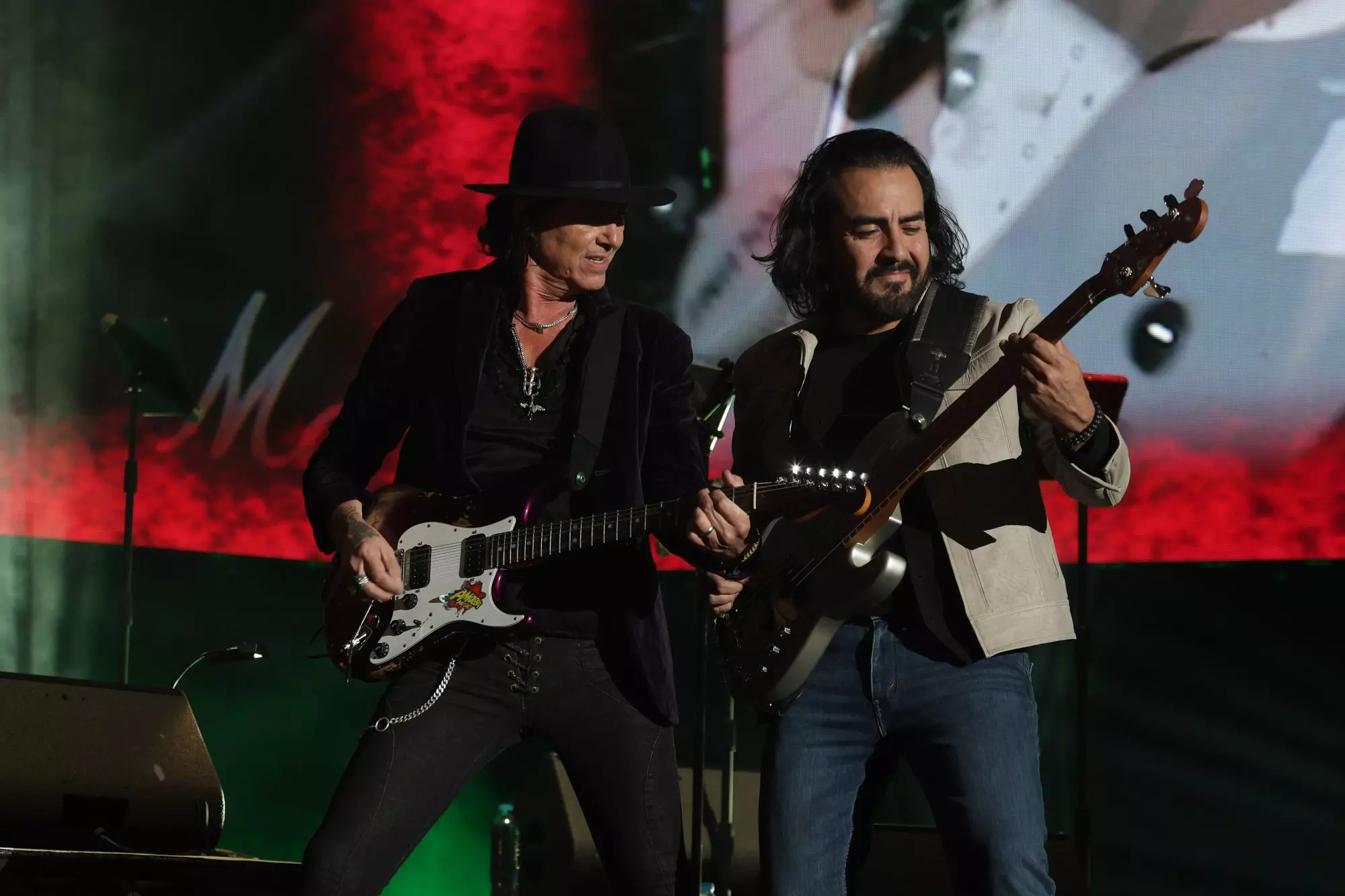
Revisiting 'El Nervio Del Volcán' At 30: How Caifanes' Final Album Became A Classic In Latin American Rock
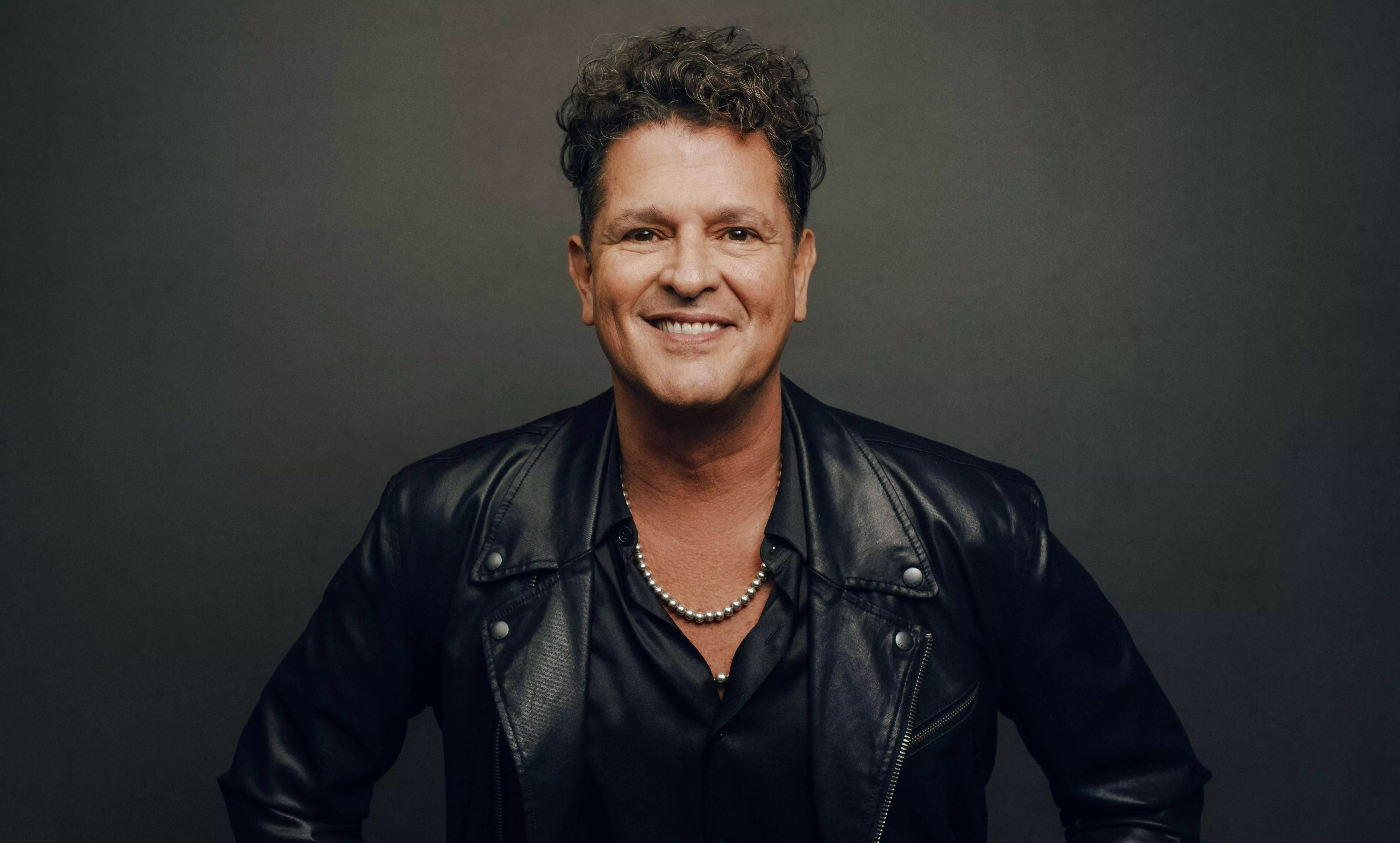
Carlos Vives Named The 2024 Latin Recording Academy Person Of The Year: What To Know About The Latin Music Icon
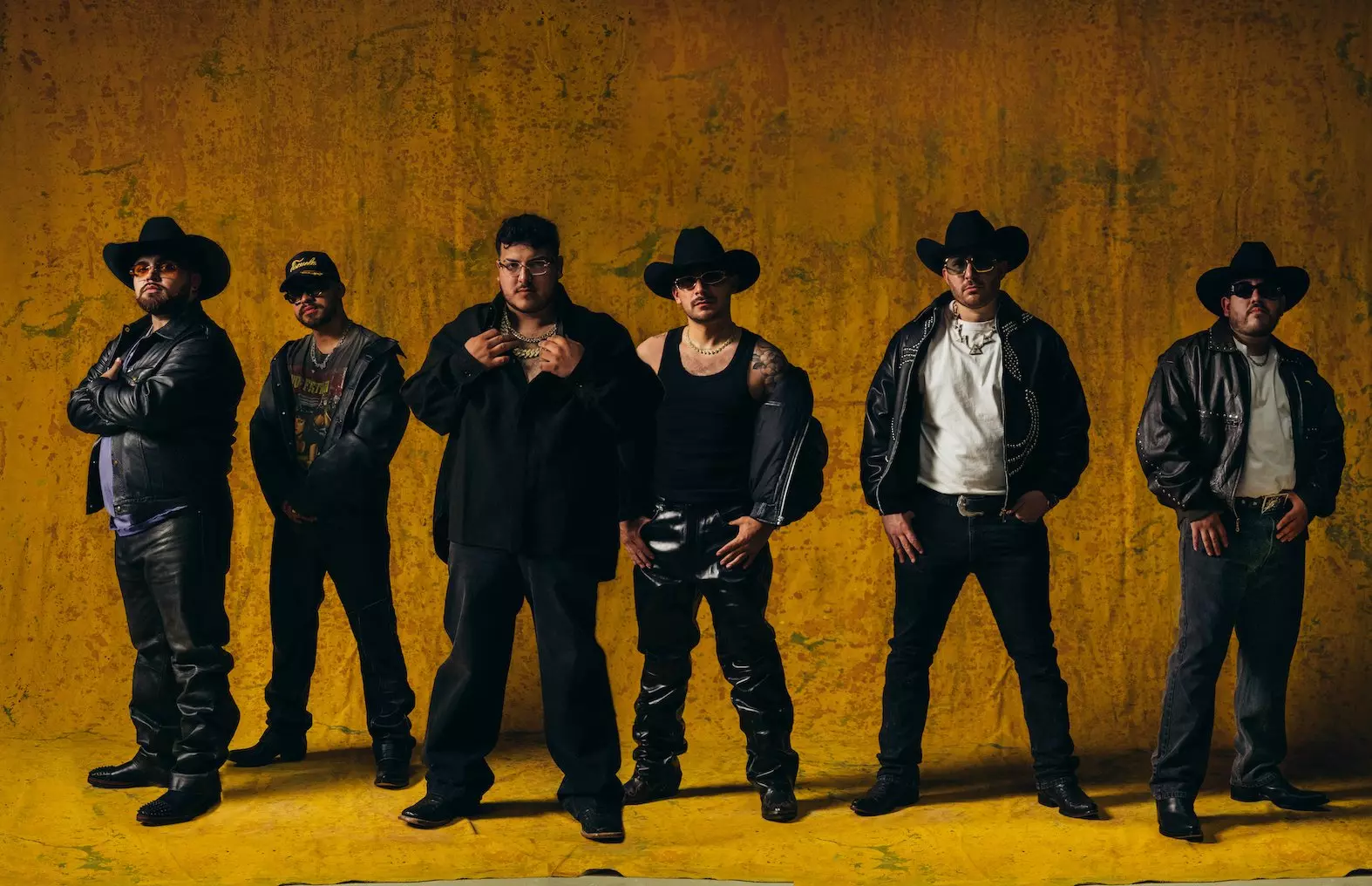
Grupo Frontera On 'Jugando A Que No Pasa Nada' & Fully Expressing Themselves: "This Album Was Made From The Heart"

5 Artists Leading A New Wave Of Latin Trip-Hop & Downtempo: Céu, Natalia Clavier & More
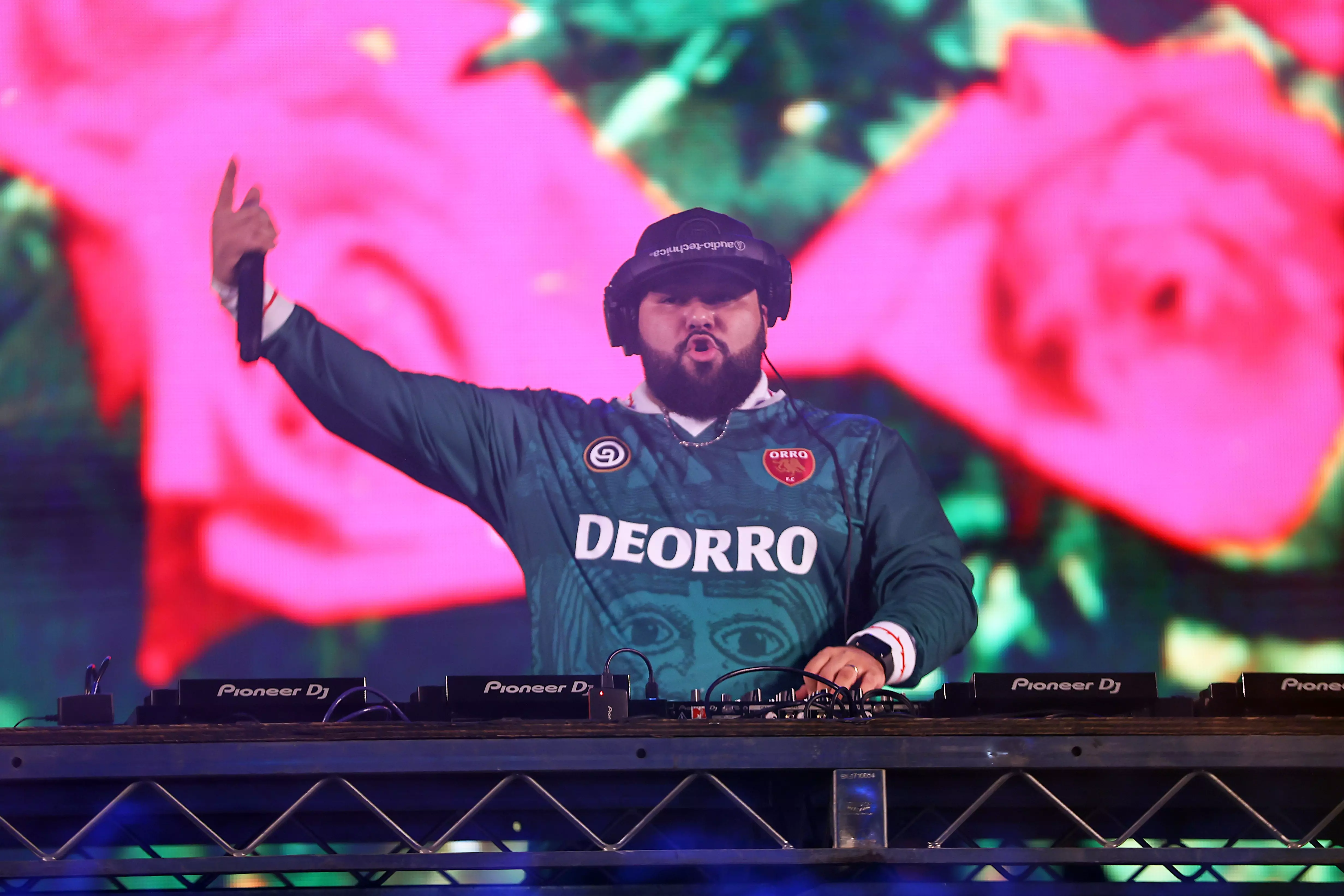
8 Essential Latin Electronic Releases: Songs And Albums From Bizarrap, Arca & More
Rafael Catana, an influential folk-rock musician in Mexico City who has hosted a music show on government-funded radio since 1997, says Caifanes' last album "arrived at a crucial moment in Mexican history" when the country was undergoing a massive social and economic transformation. Both sonically and in its production, El Nervio reflected the conflict between Mexico's interest in transnational capitalism and its underclass.
In the early 1990s, elites had opened the country to a flood of foreign corporate investment with the North American Free Trade Agreement. On Jan. 1, 1994, an armed indigenous uprising against those policies by the Ejército Zapatista de Liberación Nacional challenged the government unlike any other group had attempted in decades. (Security forces had warned against political dissidence when they massacred student protesters in Mexico City in 1968 and launched a dirty war to round up "subversives" and marginalize the counterculture, including rock bands).
While El Nervio doesn’t explicitly mention any of these historical points, it is clearly a product of the era, filled with evocations of Indigenous musical traditions despite being produced by a major corporate label. During the tour in support of the album, the band made it clear that they were on the side of Mexico’s most oppressed class, with footage of Indigenous villages and archeological sites shown during their concerts. Hernández would sometimes call on audiences to support Mexico’s native people.
Backstage, the relationship between Marcovich and Hernández became impossible and contributed to the breakup of the band. The rupture between them would become a subject of headlines in the media. Though the exact details of their conflict remain vague, the band played their final show on Aug. 18, 1995, in San Luis Potosí. A legal dispute over the name Caifanes endured for years.
By the time Caifanes broke up, rock en español was entering a new phase led by the indie-folkloric experimentation of Café Tacuba. Other musical trends also started emerging: the rap-rock of Molotov, the electro of Plastilina Mosh, the commercial explosion of Juanes' tropical pop, the Caribbean alternative rock of Aterciopelados.
In the interim, Hernandez formed a new band with André. Their Jaguares channeled a more aggressive sound, and their 2008 album 45, took home a golden gramophone for Best Latin Rock or Alternative Album at the 2009 GRAMMYs. In 2011, the original members of Caifanes reunited to play Coachella.
But the truce between Hernández and Marcovich didn’t last, and the guitarist once again left the band. A reunited Caifanes, with original members Hernandez and André, are on tour in 2024 with fellow Mexico City rockers Café Tacuba.
Mexican music journalist David Cortes, who has written several books on Latin American music, said the band was at their creative peak with El Nervio Del Volcán and had established a striking balance between traditional music and foreign sounds. Ultimately, though, the break-up of the band limited its influence over the years.
"They wanted to go further," he says in Spanish. "And there are hints of where they might have gone."
Latest News & Exclusive Videos

6 Takeaways From Megan Thee Stallion's 'Megan': Snakes, Shots & Self-Assurance

New Music Friday: Listen To New Songs From LISA From Blackpink, Lil Nas X, Kelsea Ballerini, MC Lyte & More

Revisiting 'El Nervio Del Volcán' At 30: How Caifanes' Final Album Became A Classic In Latin American Rock

Watch Prince’s GRAMMYs Highlights

Camila Cabello's Sonic Evolution To 'C, XOXO': How She Went From Pop Princess To Club Star
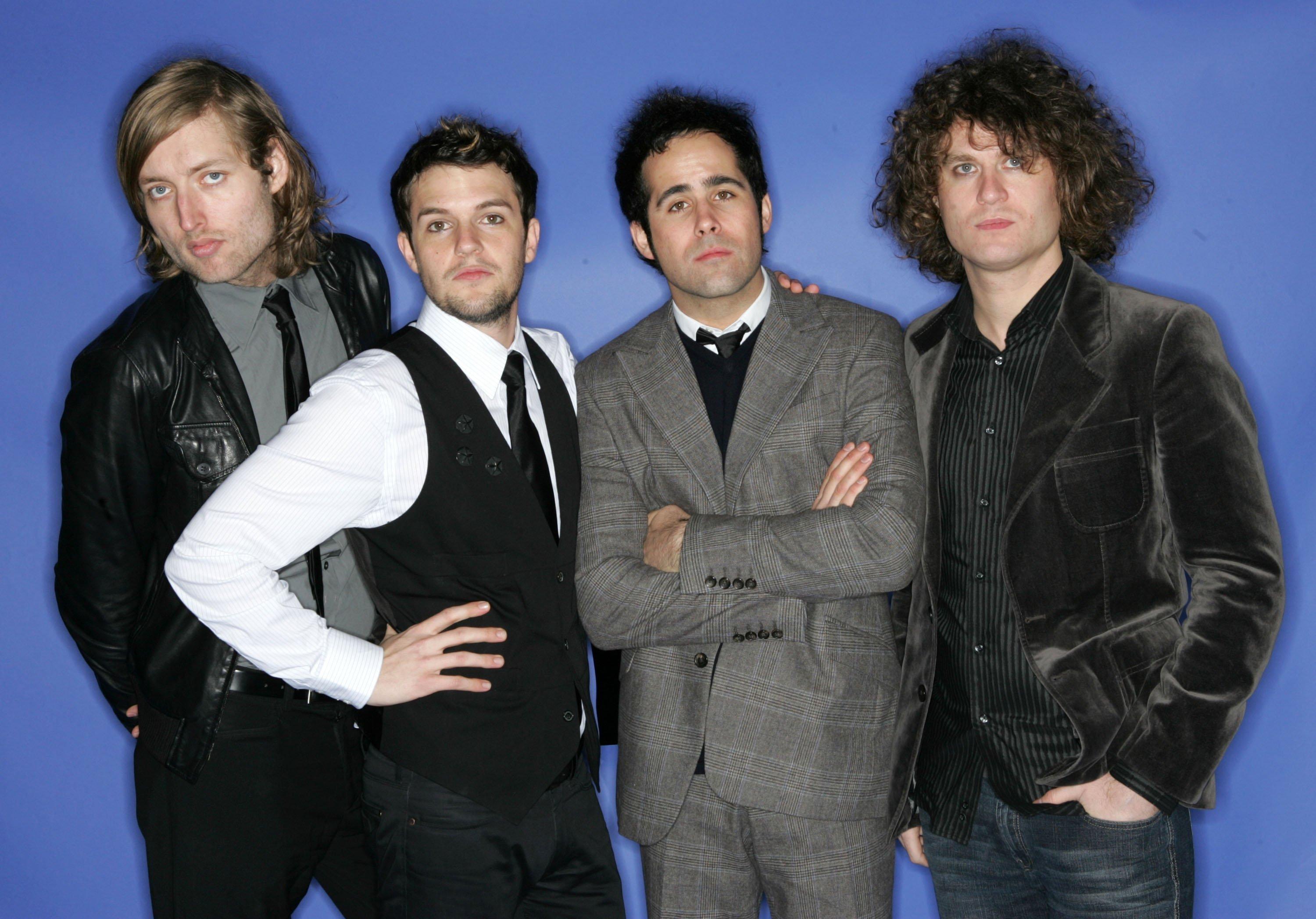
Photo: Frank Micelotta
list
5 Ways ‘Hot Fuss’ Propelled The Killers To Rock Royalty
During the alternative-guitar-band renaissance of the early 2000s, the Killers slugged out a debut album that’ll stick with us forever. Here are five reasons ‘Hot Fuss’ catapulted the Vegas favorites to the top.
They came out of their cage, and now they're doing just fine.
In an era of stiff competition, from the White Stripes to the Strokes, the Killers could have gotten lost in the shuffle. But with 2004's Hot Fuss, the Brandon Flowers-led, Vegas-based rock band essentially emerged fully formed, with a debonaire mystique, a raided new wave record collection (think the Cure and Duran Duran), and a knack for sky-high hooks. They didn't just nail the songs, and charisma, on the first go — they created one of the most timeless albums of their generation.
In the 20 years since, chances are "Mr. Brightside" has gotten maddeningly stuck in your head at least once. But that's just the tip of the iceberg: Hot Fuss is teeming with cryptic one-liners, sticky melodies and a specifically aughts sort of emotional abandon.
Today, the Killers are one of the biggest rock bands of the 21st century, with five GRAMMY nominations and more than 28 million records sold worldwide. Here are five aspects of Hot Fuss that helped them break into the stratosphere.
It's The Result Of A Completely Scrapped First Attempt
Sometimes, the first thought isn't the best thought. The Killers were full steam ahead on their debut album when Flowers hit a major snag: a little album called This Is It by the Strokes came out.
"When we put it on in the car, that record just sounded so perfect," Flowers admitted to NME in 2012. "I got so depressed after that, we threw away everything, and the only song that made the cut and remained was 'Mr. Brightside.'"
How would the Killers' legacy have changed without classics like "Somebody Told Me" and "Jenny Was a Friend of Mine"? We'll never know — but the band (and the world) is likely glad they gave Hot Fuss a second shot.
Brandon Flowers Is A Superb Lyricist
Did you know Hot Fuss has an extended murder narrative? Well, in two songs: "Midnight Show" and "Jenny Was a Friend of Mine." (The third act, "Leave the Bourbon on the Shelf," was relegated to their 2007 B-sides and rarities disc, Sawdust.)
Outside of sprawling concepts, Flowers' sneaky prowess as a lyricist is all over Hot Fuss, from sticky alliteration ("Turning saints into the sea/ Swimming through sick lullabies") to masterful use of negative space.
Exhibit A is "Smile Like You Mean It": "Someone is calling my name/ From the back of the restaurant/ And someone is playing a game/ In the house that I grew up in/ And someone will drive her around/ Down the same streets that I did." By erasing the specifics, and only providing a framework of memory, the picture is ever more elusive and intriguing.
The Album Is Front-Loaded With Five Bangers
Sure, some tracks on Hot Fuss, like "Change Your Mind" and "Believe Me Natalie," are relatively minor.
But with absolute napalm across the first five tracks — "Jenny Was a Friend of Mine," "Mr. Brightside," "Smile Like You Mean It," "Somebody Told Me," "All These Things That I've Done" — it's actually kind of a relief to get a sleeper album track, that reveals its qualities slower.
No matter your take on the rest of Hot Fuss, or their discography, the fact remains undeniable: they came in swinging.
They Kept The Demos Intact For Raw Impact
The Killers and the Boss have crossed paths a time or two — and they made a Springsteenian move when they used demos as the final tracks. It worked, imbuing Hot Fuss with a certain spontaneity and energy.
And because these Hot Fuss tracks were meant to comprise a demo, "We never thought [these songs] would be on a record." drummer Ronnie Vannucci Jr. later admitted. Talk about a turn of events: what could have been a collection of scratch tracks would help define a generation.
"Mr. Brightside" Took On A Life Of Its Own
"Mr. Brightside" has undeniably become the Killers' signature song — a staple not only at their concerts, but at bars and karaoke joints around the world. And once social media came along, it inspired a cornucopia of memes: even snippets of lyrics, like "Comin' out of my cage" and "It started out with a kiss, how did it end up like this?" have become miniature cultural forces.
Aside from Flowers' almost unwaveringly single-note verse melody, the song's odd structure — the second verse is the same as the first — has also been ripe for humor: one favorite meme takes you into the fictional writer's room when that decision was made.
Whether for rock 'n' roll transcendence, or just a nostalgic laugh, revisit Hot Fuss as it turns 20 — and smile like you mean it.
Is This It At 20: How The Strokes Redefined Rock

Photo: Rebecca Sapp/Getty Images for The Recording Academy
news
La Santa Cecilia Celebrates Their 'Alma Bohemia' With Documentary Screening & Performance At The GRAMMY Museum
In a documentary screening detailing the making of their album 'Cuatro Copas' followed by a discussion and live performance at the GRAMMY Museum, La Santa Cecilia recounts years of making music and friendship.
"Oh no, I’m going to start crying again," says La Santa Cecilia singer La Marisoul during a touching scene in Alma Bohemia, the documentary directed by Carlos Pérez honoring the Los Angeles band’s 15 year anniversary.
As it turns out, there are many reasons to be emotional about this film — and the very existence of La Santa Cecilia in the contemporary Latin music landscape. Fittingly, Alma Bohemia was received enthusiastically by the capacity audience during an exclusive screening on April 3 at the GRAMMY Museum’s Clive Davis Theater in Los Angeles.
Formed by La Marisoul (real name is Marisol Hernández), bassist Alex Bendaña, accordionist and requinto player José "Pepe" Carlos and percussionist Miguel "Oso" Ramírez, La Santa Cecilia was for years one of the best kept secrets in the Los Angeles music scene. As close friends and musicians, they won over audiences with an organic, down-to-earth sound and a lovely songbook that draws from traditional formats such as bolero, ranchera and nueva canción.
Alma Bohemia follows the making of La Santa’s 2023 album, Cuatro Copas Bohemia en la Finca Altozano. A celebration of the band’s longevity, the session also functions as a subtle, yet powerful musical experiment. It was recorded at the Finca Altozano in Baja California, where the band members stayed as guests of celebrated chef Javier Plascencia — a longtime fan.
Argentine producer Sebastián Krys — the band’s longtime collaborator — calls this his Alan Lomax experiment. The album was recorded live on tape with a variety of strategically placed microphones capturing hints of ambient sonics — a sweet afternoon breeze, the clinking of glasses, the musicians’ banter, the soft sounds that accompany stillness.
From the very beginning, the making of Cuatro Copas mirrors the band’s bohemian cosmovision: A communal approach where the quartet — together with carefully selected guest stars — get together to share the magic of creation, the unity of like-minded souls, homemade food, and more than a couple of drinks. In effect, the bottles of mezcal and never ending rounds of toasting quickly become a running joke throughout the documentary.
La Marisoul’s fragile lament is enveloped in spiraling lines of mournful electric guitars with soulful understatement on the track "Almohada." Guest artists liven things up, with Oaxacan sister duo Dueto Dos Rosas adding urgency to "Pescadores de Ensenada," while son jarocho master Patricio Hidalgo ventures into a lilting (yet hopeful) "Yo Vengo A Ofrecer Mi Corazón," the ‘90s Argentine rock anthem by Fito Páez.
Visibly delighted to be part of the bohemia, 60-year-old ranchera diva Aida Cuevas steals the show with her rousing rendition of "Cuatro Copas," the José Alfredo Jiménez classic. "Viva México!" she exclaims as the entire group sits around a bonfire at night, forging the past and future of Mexican American music into one.
Read more: La Santa Cecilia Perform "Someday, Someday New"
Following the screening, the band sat down for a Q&A session hosted by journalist Betto Arcos. Sitting on the first row, a visibly moved young woman from El Salvador thanked the band for helping her to cope with the complex web of feelings entailed in migrating from Latin America. La Santa’s songs, she said, reminded her of the loving abuelita who stayed behind.
"We love the old boleros and rancheras," said La Marisoul. "We became musicians by playing many of those songs in small clubs and quinceañeras. It’s a repertoire that we love, and I don’t think that will ever change."
Carlos touched on his experience being a member of Santa Cecilia for about seven years before he was able to secure legal status in the U.S. When the band started to get concert bookings in Texas, they would take long detours on their drives to avoid the possibility of being stopped by the authorities. Carlos thanked his wife Ana for the emotional support she provided during those difficult years.
Ramírez took the opportunity to acknowledge producer Krys for being an early champion of the band. "He had a vision, and he made us better," he said, flashing forward to a recent edition of the Vive Latino festival. "There were about 12,000 people to see us," he said. "And they were singing along to our tunes."
"The band is just an excuse to hang out with your friends," added La Marisoul just before La Santa performed two live songs. Her voice sounded luminous and defiant in the theater’s intimate space, always the protagonist in the group’s delicately layered arrangements.
"The first time I got to see the finished documentary, I felt proud of all the work we’ve done together," said producer Krys from his Los Angeles studio the day after the screening. "On the other hand, there’s a lot of work ahead of us. I believe La Santa Cecilia deserves wider exposure. They should be up there among the greatest artists in Latin music."
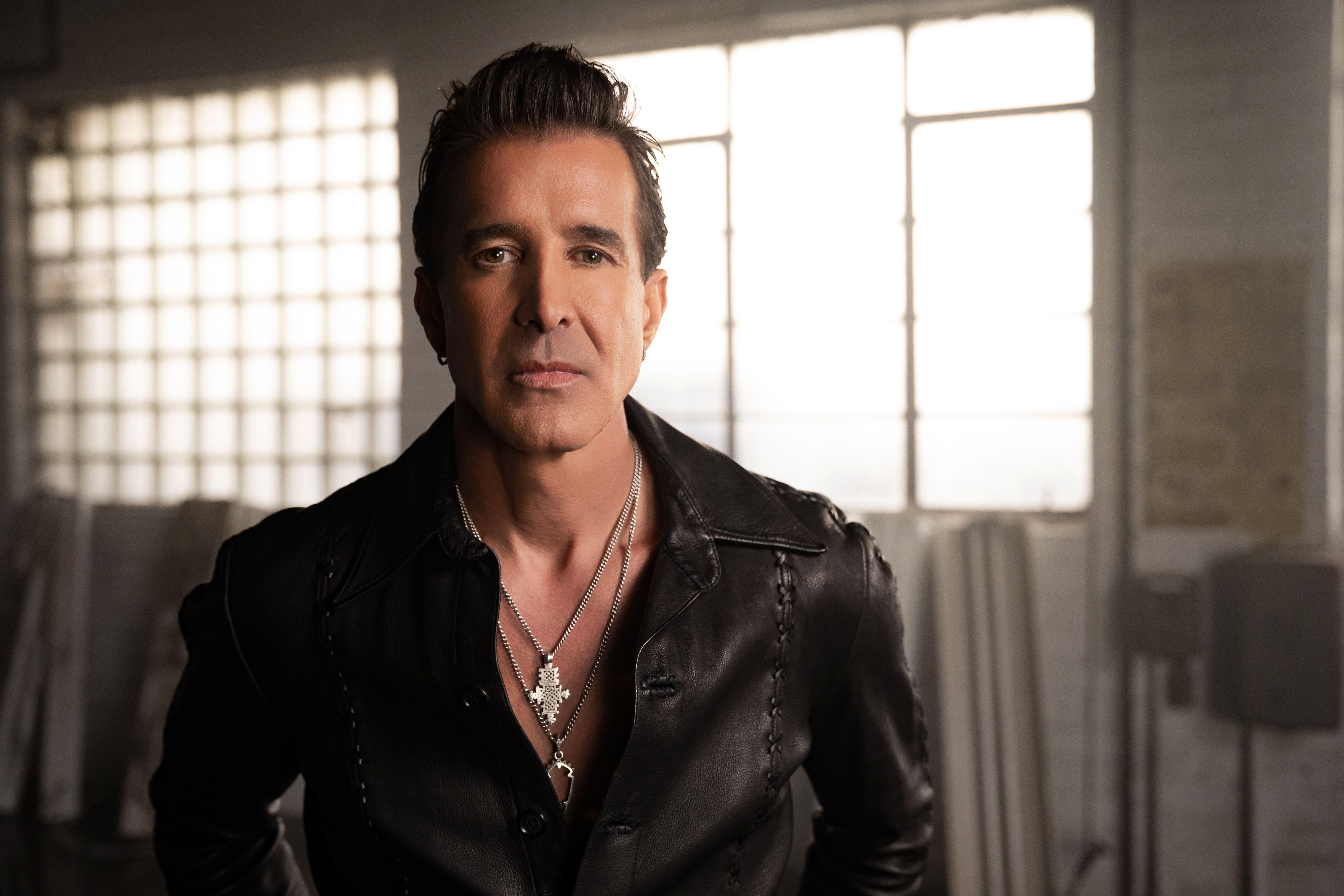
Photo: Matt Akana
interview
Creed's Scott Stapp On New Solo Album 'Higher Power,' Sobriety & Being "A Child With No Filter"
In an in-depth interview, Creed's Scott Stapp discusses being a survivor, recommitting to God, and his bludgeoning, cathartic new solo album, 'Higher Power.'
Scott Stapp prefers Zoom with the camera off, but for a minute, he flips it on to say hello. The Creed frontman reveals himself to be alone on his tour bus, in near complete darkness, encased in a black hoodie.
"You look like a Jedi," his rep quips in an adjacent Zoom window. "They're training me," Stapp quips back.
Twenty-five years ago, this might be a breeding ground for his inner hellhounds, his unprocessed torments — as he sang, his own prison. But a sweatpants-clad Stapp looks relaxed, grounded, rooted; after this interview, he's eyeing a nap in the belly of this beast.
Stapp is a vocal proponent of recovery culture, and his language is permeated with it — God, squaring up with your ego, taking it one day at a time. "Some of us, we're so allergic to alcohol, so allergic to drugs," Stapp explains, "that when we use them, we break out in handcuffs and end up on the six o'clock news. And that's been my story, no doubt."
You can Google these stories; they're out there. While he's in no mood to recapitulate details to the press — who would be? — his new solo album, Higher Power, out March 15, directly addresses everything he's been through.
The title track begins with the line, "Forty feet down falling/ Headfirst off the edge" — and, well, that happened. (The rapper T.I. saved him, not knowing who he was at the time; Stapp later called him his "guardian angel.") By the chorus, Stapp frames what followed as a resurrection: "The day that I died was the day I came back to life."
At the zenith of Creed's career, Stapp pleaded "Can you take me higher?"; on Higher Power, this request seems to have been greenlighted. Which doesn't mean he has a messianic complex; Stapp doesn't project a shred of solipsism. He's just doing what he's meant to do.
"I don't pay attention to what's going on or try to follow trends, try to write to ride a wave or to catch something that's hot in the moment," he says.
What can he say? He's just Stapp — the same he's ever been, with a new album, a reunited Creed (who are about to head on tour) and a new lease on life.
This interview has been edited for clarity.
The song "Black Butterfly" is a great reminder that recovery isn't a one-and-done thing. It's a continuum, with peaks and valleys. Can you talk about that?
Well, it's absolutely a continuum and I think it not only applies to sobriety, but I think it applies to growth as a human being in general in every aspect of your life.
Just as we try to evolve…it is always five steps forward, three steps back. As long as you're continuing to move forward and learning from every setback, that's where true growth happens.
"Black Butterfly" represents so much, and I don't really want to get into the details of every aspect of what that song meant to me. Clearly, it involves a rebirth, but there's many contextual layers on that song in terms of the depths of the rebirth and what rebirths I'm talking about. But if we want to apply that to sobriety, there's definitely a continual process of cocooning and rebirthing.
Relapse has been a part of my story. It's not a part of everybody's, but it's been a part of mine. And each time that I have, I've definitely learned where a chink in my armor was that I was unaware of.
I also learned that I can't ever get overconfident. I can't ever think I've got it. I have to always stay on guard and continue to take it one day at a time and be vigilant. And then as time goes on, you get into a place where it becomes a lifestyle and a routine.
I'm glad you're on the good foot.
I just continue to grow, man, and take it one day at a time and know that God is doing a work in me in such a profound way, not only through my sobriety, but through my spiritual life.
One thing that you learn in recovery is the key to sobriety is the condition of you as a spiritual being. And for me to finally make that connection and tie it back to the roots of my faith — that really kind of put a bow and an icing on top of the cake, because everything started making sense.
I've always been interested in spirituality, but we live in a relentlessly anti-spirit world. How do you keep that antenna up when we're all deluged by the "make money and shut up" attitude?
It's a daily commitment to wake up and get into prayer — from my perspective as a Christian, getting in the word of God. Reading, surrounding myself with other like-minded people who do the same thing, as we edify and help each other grow in the spiritual walk that we have together.
When you embrace it and you make it a part of your lifestyle, surround yourself with people who have the same passion, drive, and heart in seeking that, then it creates the perfect storm for spiritual growth. And I'm fortunate to have that around me right now.
*Scott Stapp performing with Creed in 2003. Photo: Chris Trotman/Getty Images for NASCAR*
When Creed were on top of the world in the early 2000s, I'm sure your Christian ethics were completely at odds with everything going on around you.
Oh, 100 percent. And I also had this inflated, youthful ego; I thought I could handle it on my own, and didn't have any support around me. And you live and learn.
I help younger artists now who are going through similar situations and entering this business and let them know how important it is to surround yourself with support. And for those that don't have family, like I didn't, we really create a team.
Because this is a gift that we have — this career in music — and we can become so easily dismantled and it can be robbed from us by the trappings that come along from success and the temptations of the world. We're blessed with this opportunity to be creatives for a living. And so to nurture that, cherish it, protect it, look at it with professionalism and gratitude.
For those that don't have an issue with having a few drinks every now and then, do it on your off days. But when it's showtime and when it's a workday, look at it that way — with a vigor and passion of someone who's trying to be the best at what they do with their craft in their job.
That way, you can preserve it and it can be long-lasting, and you won't shoot yourself in the foot with self-sabotage.
Higher Power is such a production bulldozer. Can you talk about crafting the sound of it?
I was just creating those songs with my guys that I write with, in real time, as I was feeling inspired. I was trying to stay true to what I do, how I feel, and just continue to try to lyrically and sonically create cinematic pieces of art.
Fortunately, by the way that it was created, there was a theme and each song kind of bled into the other and were held together by a singular thread — which was the impact that God, my higher power has had in my life throughout the ups and the downs and was always there even at my darkest times.
And I think I addressed that in Higher Power. It's resounding with them in its sonic presentation and lyrical narrative.
You said you're looking to "create cinematic pieces of art." What role does the cinema play in your life? Do you think of great rock songs as being akin to mind movies?
No, I think I refer to that more in terms of how I'm creating the picture, not necessarily any reference points on any films. I'm trying to create something cinematic. I'm trying to create something that when it's heard, well, hopefully when someone connects, paint a picture in their mind of an experience and not only just connect with them on a personal level.
I think that's something I've always tried to do lyrically since I started writing songs. Since my first professional record in 1997, with My Own Prison, I think it's just been a part of the way that I create. And I think I really wanted to intentionally focus on that, in terms of the production and the music beds that went around the themes that I was talking about.
And I definitely think we did. I think my producers, Marti Frederiksen and Scott Stevens, captured that. I'm proud of what we did, and I feel that this is my best solo work to date.
And I've got a song I'm very proud of. It's a duet that I did with the Rock Queen herself, Dorothy, which will be out this Friday. And I'm very excited to share that song and everything that's coming with it because I think it's just a centerpiece of this record and a theme that really is what this album is: the walls talking.
The first line of "Higher Power" reflects a very traumatic event in your life; I don't need to recite it back to you. You're a very candid and honest cat.
I mean, if you go back to 1997 and you listen to "My Own Prison," that's probably one of the most personal and confessional songs I've ever written. That's the only way that I know how to write. That's the only way that the inspiration, the creativity comes out of me.
I bear my soul. I talk about my flaws, my weaknesses, my failures, the dark times. I just speak what's in my heart. I mean, I think that's probably a part of being a child with no filter. And that's kind of translated into how I write lyrics. I just say how it is and how I see it, how I'm observing it, how I'm experiencing it.
And call it what you will, but I call it my style. However you want to interpret that is cool. And I appreciate that you hear the vulnerability and the honesty in that because that's where it comes from.
I remember the early 2000s as a highly macho world — of raunchy comedies, shock jocks, getting called the f-slur on the playground. In the hard rock world of that time, I'm sure vulnerability was steamrolled over.
Well, I know that we came out with a song called "One Last Breath" in 2002, which was clearly a cry for help and vulnerability. So, I don't think I was paying too much attention to what was going on around me and what other people were doing. I never really have, I just do what I do.
And so it was kind of the antithesis of what you just described. You're talking about this macho era, and I'm writing lyrics, "Please come now, I think I'm falling/ I'm holding onto all I think is safe/ I think I found the road to nowhere, and I'm trying to escape."
I don't pay attention to what's going on or try to follow trends, try to write to ride a wave or to catch something that's hot in the moment. I really don't pay attention to the outside world.
That seems to be a throughline of your career.
To be honest with you, I'm a bit of a recluse. And when I was younger, I kind of romanticized that loner poet sitting under a tree, writing lyrics in a book, observing the world around him.
And I guess, looking back, that wasn't so much of a romantic approach, but more of just who I was and me trying to come to grips with it and accepting that that's who I am and being comfortable with it.
I think sobriety and clarity has helped me become comfortable with it — because I think that part of the reason I overindulged at times is because I never really felt comfortable around crowds. I never really felt comfortable around groups of people and socializing and mindless conversation and chit-chat. I think that's fine and that's great for other people, but it never really worked for me.
So, it's nice to be in a place in life all these years later, where you find your tribe and you find the people that speak your language, and are like-minded, and feel comfortable and safe there.
*Scott Stapp performing in 2023. Photo: Jerry Kingwell — Revelry Studios*
Back then, the mean-spirited humor about Creed couldn't have jibed with your psychological state. These days, you take it all in good fun, but back then, it must have been like poison.
You know, it didn't line up with what we were experiencing. It was a media narrative that was created. I can't look back and say that there were times where it didn't hurt and where I didn't understand. You've got stadiums on hold and you're selling out every arena in America, but then you're reading articles that you're this hated band, and it's just not lining up.
And we didn't have social media to talk back and correct things that were said. Not that I would even do that now, or waste my time.
I definitely feel that some of that did affect me in a negative way, and I didn't handle it appropriately. I would actually say that some of it probably caused some trauma, and the only way I knew how to do that was numb the pain.
We're in a different place now. We've got much thicker skin, and know what's important in life, and know whose opinions matter. But when you're young and that happens, it definitely has a profound impact on you. And I think was a big contributing factor — one of the reasons the band split up. I mean, there were others, but it was kind of a domino effect.
All in all, you seem to be in a really healthy and positive spot. Where do you want to go from here?
Right now, I'm in the moment. The album hasn't come out yet. I feel like we're at the very tip, tip, tip of the iceberg on this record. We've got the Creed stuff in between, and something tells me in my heart that this album's really going to be making continual impact all the way through 2025.
I'll be doing some solo touring and promotion in between the Creed stuff along the way, and then I look at 2025 as a continuation of the Higher Power tour and promotion.
Not to be clichéd, but I think the best is yet to come for this record, and we're at the beginning. So, I'm just taking it one day at a time, man.
The Salvation Of Chris Daughtry: How He Conquered Music-Biz Machinations & Fear Of Irrelevance For Triumphant New Album Dearly Beloved

Eme Alfonso performs at the International Jazz Plaza Festival in 2018
Photo: Erika Goldring/Getty Images
news
GRAMMY.com To Launch New Digital Performance Series "Global Spin" To Celebrate Global Music
Launching Tuesday, Sept. 28, "Global Spin" will celebrate exciting genres like Afrobeats, K-Pop and Latin music and will include exclusive performances from Eme Alfonso, Candy Bleakz, and many others
Last year, the GRAMMY Awards updated the Best World Music Album category to Best Global Music Album to honor artists across the globe. But why stop there?
On Tuesday, Sept. 28, GRAMMY.com will premiere its latest digital series: Global Spin, a performance series spotlighting artists from around the world. Each episode of Global Spin will feature a performance from a notable artist or group and will celebrate both the creators and their home countries.
Airing biweekly on Tuesdays at 10 a.m. PT/1 p.m ET on the Recording Academy's official YouTube channel, Facebook page, Instagram page, and Twitter profile, Global Spin is the new home for global music on GRAMMY.com, where the celebration of the genre and the international artist community is the focus. With electrifying artists like Cuban singer/songwriter Eme Alfonso and Nigerian rapper Candy Bleakz confirmed for performances, Global Spin will keep fans of the international music community plugged into one of the most exciting lanes in all of music.
"Music is one thing that transcends borders," Alina Vission, a Content Producer at the Recording Academy and the creator and co-producer of Global Spin, tells GRAMMY.com. "We're excited to celebrate the global music community and take our audience on a trip around the world through music."
"I am extremely excited to have the opportunity to help showcase global music and to shine a light on all the talented musicians across the world," Hillary Melin, Senior Editor/Producer at the Recording Academy and one of the co-producers of the series, says of Global Spin.
Read: Olamidé On The Ascent Of Afrobeats, Supporting Newer Artists & His Subdued New Album UY Scuti
A platform to support international artists, Global Spin is born out of the exploding global music scene taking the world by storm today. Whether it be Nigeria's dynamic duo of Wizkid and Tems sweeping the world off their feet with their chart-topping track "Essence" or South Korea's BTS serenading their way into the millions of hearts of the BTS ARMY, global music and artists are dominating today's worldwide music industry like never before.
Shawn Thwaites, a Project Manager in the Recording Academy's Awards department and genre manager for Global Music, partly credits the international growth of global music to the new and rising wave of Afrobeats artists. Still, he notes Afrobeats and global music at large are nothing new; pioneers like Fela Kuti and boundary-pushers like Brazil's Djavan laid the foundation for today's scene decades ago. "It's always been here—we're just catching on," Thwaites says of the global music sound.
As Afrobeats and Afropop continue to rise in the global music sphere, Thwaites also points to "the whole continent of Africa" as well as regions like Brazil, Trinidad, Barbados, Latin America, Asia, and beyond as locations with thriving music scenes to watch. "There's so much music all over this world. Global music is truly global," he reflects.
Read: Altin Gün On 'Yol' & The Future Of Global Music: "We Like To Think We Defy Genres As A Band"
With the ongoing evolution and proliferation of music technology and social media, global music continues to reach new audiences across international borders, while the genre's established artists and rising stars are pushing the sound's boundaries to new heights.
"I would love for global music to find a way to connect more with the fans," Dominican singer/songwriter and producer the Change tells GRAMMY.com via email. "Within the next five to 10 years, I would love to see more activities that help us spend time with our fans, because in the end, we owe them everything that is happening to us."
"The growing interest in global music means a lot more people from different walks of life and different parts of the world will now be able to relate to my genre of music: Afrobeats," Ghanaian Afropop, dancehall and R&B singer/artist MzVee adds. "I believe music is a global language that transcends all boundaries, and I want to reach fans in every corner of the world, despite the differences in language and genres. My dream is to see global music reach every corner of the world, for global music to break all barriers, to see my music being consumed by everybody, [regardless of] the differences in language, culture [and] religion."
"I'm very happy that [audiences] want to explore and open new doors. I believe that when we learn from other cultures, we grow as human beings," Eme Alfonso tells GRAMMY.com by email. "I would like the people to understand that when they are listening to music from other parts of the world, they are feeling the history, the reality, and the conflicts of a country, because artists reflect their life and problems through art."
But perhaps Haitian DJ/producer Michael Brun said it best: "Global music is the future of music," he bluntly told GRAMMY.com in 2020. "As the world continues to become more interconnected, music culture no longer has borders. The fusion of sounds breeds innovation, and global music artists are at the forefront of that movement."
That innovative movement now has a new home on GRAMMY.com with Global Spin.
Tune in to the sounds of the world with Global Spin every other Tuesday starting Sept. 28, at 10 a.m. PT/1 p.m ET on the Recording Academy's official YouTube channel, Facebook page, Instagram page, and Twitter profile.
